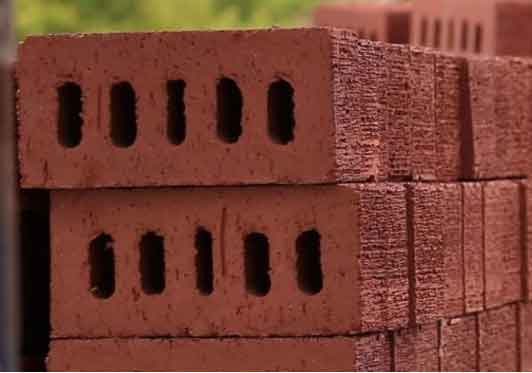Bricks, the age-old building blocks of construction, are essential elements in creating durable and resilient structures. The compressive strength of bricks is a critical parameter that defines their ability to withstand vertical loads and pressures. This article explores the concept of compressive strength in bricks, its significance in construction, factors affecting it, testing methods, and the implications for architects, builders, and engineers.
Defining Compressive Strength:
Compressive strength is a measure of a material’s ability to resist axial loads, pushing or squeezing forces that tend to shorten or crush the material. In the context of bricks, compressive strength refers to their capacity to withstand the vertical load or pressure applied when stacked in a wall or column.
Importance of Compressive Strength in Bricks:
Structural Integrity: The compressive strength of brick is a key determinant of a structure’s overall strength and stability. It ensures that walls, columns, and other load-bearing elements can safely support the vertical loads imposed on them.
Durability: High compressive strength is indicative of a brick’s durability and resistance to wear and tear over time. It is particularly crucial in regions with seismic activity or other environmental challenges.
Load-Bearing Capacity: The load-bearing capacity of a brick wall or structure directly correlates with the compressive strength of the bricks used. A higher compressive strength allows for the construction of taller or more robust buildings.
Factors Affecting Compressive Strength:
Raw Material Quality: The type and quality of raw materials used in brick manufacturing significantly impact compressive strength. Bricks made from high-quality clay or shale tend to exhibit better strength characteristics.
Manufacturing Process: The method of brick production, including the firing temperature and duration, influences compressive strength. Well-fired bricks with uniform density generally possess higher strength.
Mix Proportions: The proportions of clay, sand, and other additives in the brick mix can affect compressive strength. Careful control of these proportions during the manufacturing process is essential.
Curing Conditions: The curing conditions, such as temperature and humidity, play a crucial role in the development of compressive strength. Proper curing ensures that bricks reach their optimal strength over time.
Testing Compressive Strength:
a. Laboratory Testing: The most common method for determining the compressive strength of brick involves laboratory testing. A sample brick is subjected to a compressive load until failure, and the maximum load sustained is recorded.
Non-Destructive Testing: In some cases, non-destructive testing methods, such as ultrasonic testing or rebound hammer tests, are used to estimate compressive strength without damaging the bricks. While these methods provide quick assessments, they may not be as accurate as laboratory tests.
Field Testing: Field testing involves extracting bricks from a construction site and subjecting them to compressive strength tests. This allows for real-time evaluation of the quality of bricks used in a specific project.
Classification of Bricks Based on Compressive Strength:
Bricks are classified into different categories based on their compressive strength:
First Class Bricks: These brick have high compressive strength and low water absorption. They are suitable for use in load-bearing structures and exposed brickwork.
Second-Class Bricks: With moderate compressive strength, second-class brick are commonly used in non-load-bearing walls. They may have slightly higher water absorption.
Third-Class Bricks: Third-class brick have lower compressive strength and higher water absorption. They are typically used for temporary or non-structural purposes.
Implications for Construction Professionals:
Material Selection: Architects and builders must carefully consider the compressive strength requirements of a project when selecting brick. This involves choosing bricks that meet the structural demands of the intended application.
Structural Design: Engineers incorporate the compressive strength of brick into structural designs to ensure that the building’s load-bearing elements can safely support the intended loads.
Quality Control: Manufacturers and builders need to implement rigorous quality control measures during brick production and construction to ensure that the specified compressive strength requirements are met.
Compliance with Standards: Compliance with industry standards and building codes is crucial to ensuring that brick used in construction meets the required compressive strength specifications.
Conclusion:
In the realm of construction, the compressive strength of bricks stands as a fundamental parameter that dictates the success and longevity of a structure. From load-bearing walls to towering skyscrapers, the ability of bricks to withstand vertical loads is pivotal. Architects, builders, and engineers must work in tandem, considering factors such as raw material quality, manufacturing processes, and curing conditions to ensure that the selected brick meet the necessary compressive strength standards. As the construction industry continues to evolve, the enduring importance of compressive strength in brick reaffirms their role as the reliable and resilient foundation upon which our built environment stands.

